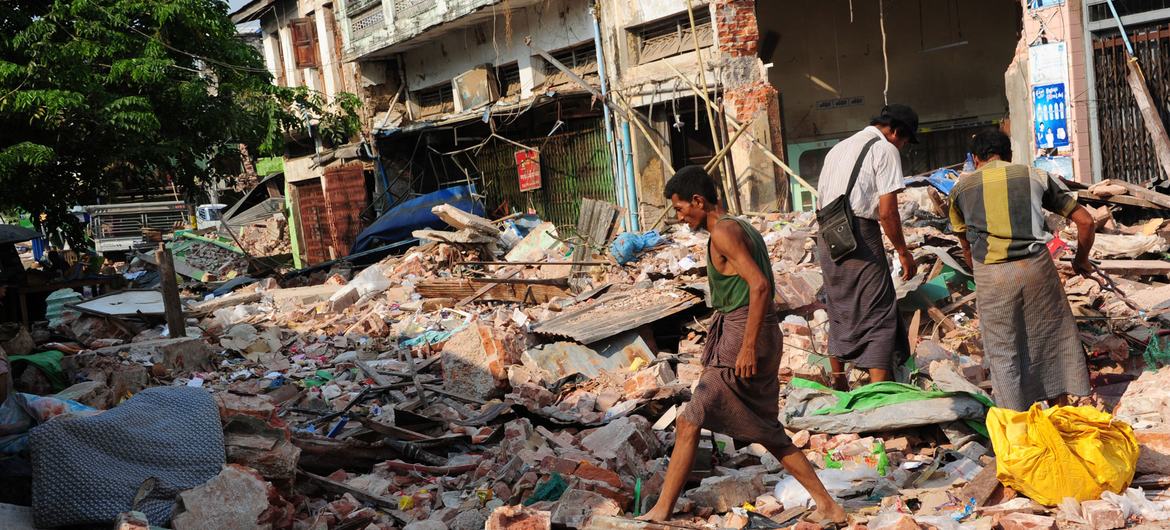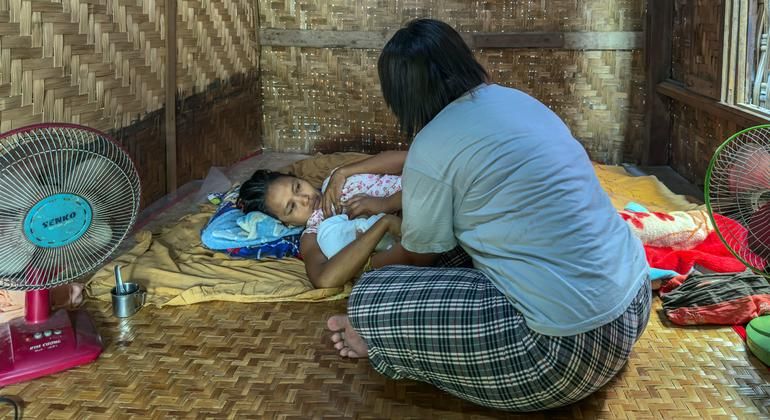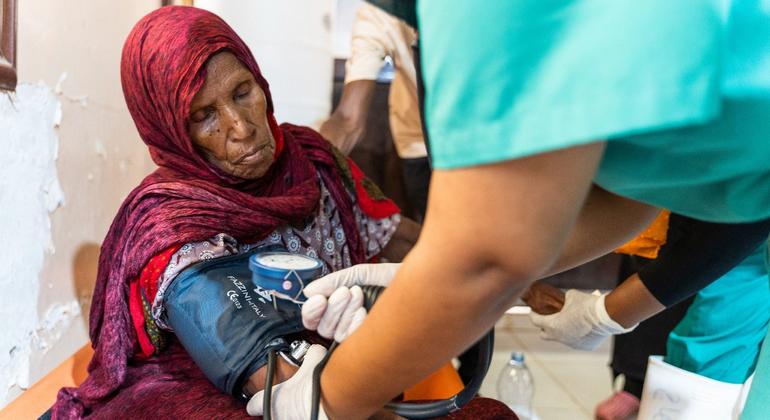“I hate the earthquakes. The earthquakes took my mother and my aunt,” said Khin Yadanar, five years old, to the UN Children's Fund (UNICEF), after his mother and his aunt were killed when a brick wall collapsed over them.
Around 6.5 million children already needed humanitarian assistance before the earthquake, which aggravated the existing vulnerabilities resulting from the brutal civil war between multiple armed opposition groups and the Military Board that seized power in a coup d'etat of February 2021.
Families now face an additional threat of floods and landslides with the arrival of the monsoon season.
Midwives are lines of life
As health services collapsed after the earthquake, “women, especially pregnant mothers, were seriously affected,” said Yu Yu, a midwife in Mandalay, speaking with the UN reproductive health agency, UNFPA.
In the midst of chaos, midwives have emerged as first -line heroes. Without flinching for replicas and confronting physical obstacles and emotional challenges, midwives gave hope and support to save lives.
Yu Yu remarkably remembers the case of one of his patients who suddenly remained stranded, unable to reach any medical installation when he was delivered after the earthquake.
Without hesitation, Yu Yu ran by his side: “When I reached her, I was exhausted, overwhelmed by fear and financial insecurity after the earthquake,” he recalled.
That day, Yu Yu saved the mother and the child, since the baby's umbilical cord had wrapped around the baby's neck.
UNFPA has implemented mobile clinics to ensure that women and girls continue to receive essential medical protection and medical care services.
A 10 -year -old boy with his parrot on the shoulder in a temporary camp established after the devastating earthquake that hit Myanmar.
Deep trauma
“She cries as she sleeps, and I am worried that something inside her has broken,” said Thida, Thiri's mother, eight years old, talking to Unicef.
Under the visible devastation of the earthquake is a deeper crisis: the deep psychological trauma that young survivors carry.
“I was so scared. My heart was beating very fast, and all I could think was about my parrots and cats at home,” said Thurein Oo, a ten -year -old boy who prayed in a mosque when the tremor hit.
In the areas affected by the earthquake, parents are witnessing similar signs of anguish in their children: sudden anxiety, emotional abstinence and insomnia nights, say the workers of the UN.
In response to this growing mental health crisis, UNICEF and its partners have mobilized to provide critical psychological support to the affected communities.
By establishing friendly spaces for children, UNICEF aims to promote psychosocial well -being, develop resilience and restore a sense of normality to children's routines. Through various activities such as drawing, children learn to deal with their trauma.
“I colored a photo of my mother,” said Khin, who lost his mother in the earthquake. “I feel better when I draw.”
Although the physical reconstruction of households and infrastructure will probably have been, the emotional and psychological cost that the earthquake has had in children cannot be allowed to be.
“I like to come here,” said Thurein, referring to one of these spaces. “I feel safe and made a new friend who also lost his home,” he added.

The survivors of the earthquake survey the ruins of their homes in Pyinmana, Myanmar, after the earthquake there.
Proactive planning
While earthquakes are among the most mortal natural hazards, it is the collapse of buildings that causes the most devastating effects. As such, the reduction of proactive disaster risk, such as making structures resistant to earthquakes, is essential to reduce economic deaths and losses.
Focusing risk-sensitive urban development, the UN-Habitat and the UN Office for disaster risk reduction (UNDRR) are also working in Myanmar to mitigate the risks that future earthquakes could propose.
While little can be done to avoid natural risks, such as earthquakes, much can be done to mitigate their effects.
As the reconstruction efforts are underway, the UN is dedicated to “ensuring that each step we take makes the rebuilt areas stronger and more resistant than before,” said Anacláudia Rossbach, executive director of UN-Habitat.












